It can be a hard thing to hold onto exciting news, but it is high time I broke a little secret to you. Crooked Lines is set for a spectacularly unique “scales and all” collector’s edition shortly, bound in fish skin leather!
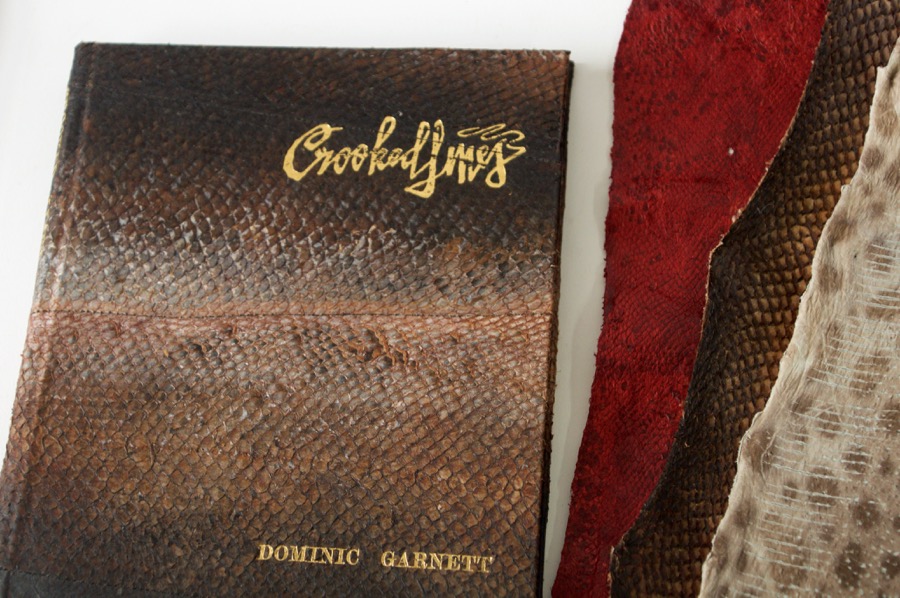
Yes, you read that correctly. Fish leather is certainly an unusual medium, but one of surprising beauty and durability. The reason you don’t see it used more often is probably the tiny number of craftsmen and women who work with it (unless you know a friendly Eskimo).
What a stroke of luck, therefore, that after many weeks of fruitless searching I found artist Kari Furre just a short cast away in my home county of Devon. Having exhibited her work in galleries and museums from Norway to New York, she is an artist with a real obsession with water and marine life. With Nordic roots and a love of Devon’s coastline every bit as strong my own, her other great passion is swimming in wild environments. I am fascinated every time I visit her artist’s den, which is a real treasure trove of naturally inspired creativity. There are fish in almost every corner!

Indeed, Kari has produced all kinds of artifacts from fish leather, using salmon, cod, plaice and many more. It is a much slower, more painstaking process than working with mammal skins, but one that produces stunning results that you wouldn’t get from any other medium. Furthermore, the fish skins are sustainably-sourced (mostly from Iceland & Scandinavia). Fish skin tends to be routinely discarded, and so putting it to creative use is a great form of “up-cycling”.
So how exactly do you make leather from fish skin, let alone a collectible fishing book? To my untrained eye, it resembles a blend of techniques from ancient to modern, mixed with pure alchemy! The initial books are made using Icelandic salmon skin, but we will also be making a handful of true one-offs using cod and even wolf fish skin.
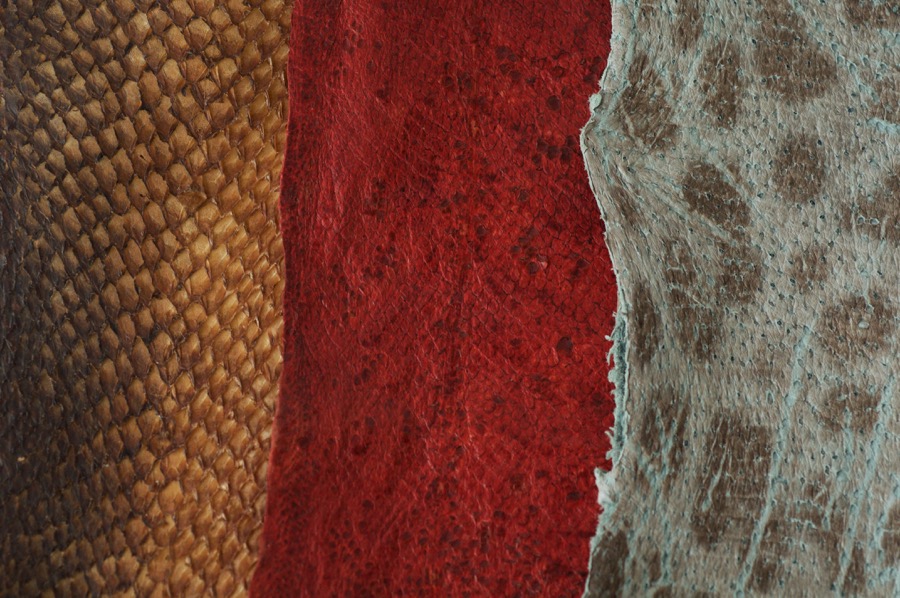
Above: Varieties of fish leather (L to R: Salmon, cod, wolf fish)
At first, the skin is carefully cleaned, with any excess flesh taken away and the scales scraped clear. Time is of the essence in the early stages as the skin is easy to spoil when the skin is fresh. It must be kept cold, which probably explains why the craft has its roots in countries such as Norway and Iceland.
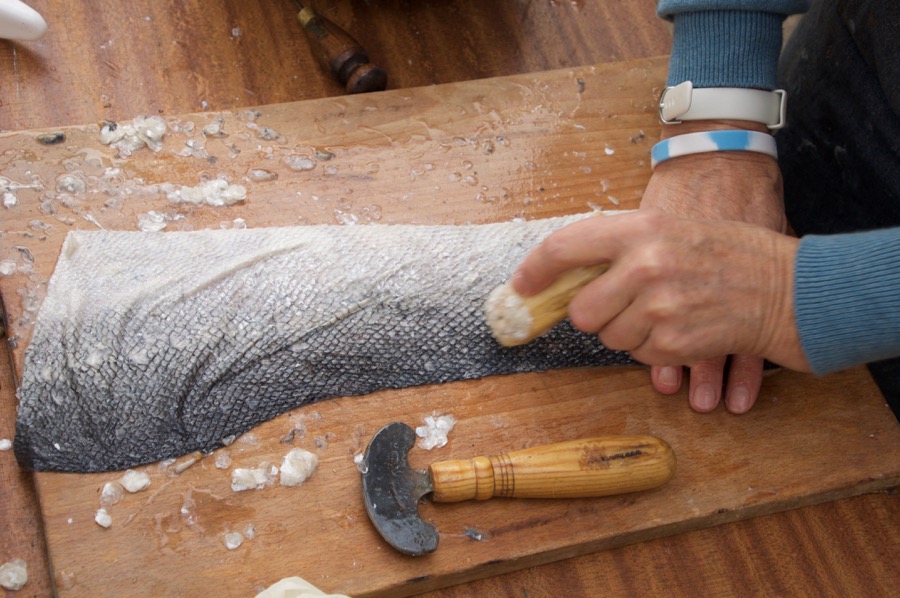
As for the tools Kari Uses, these are both ancient and modern. Bone was a popular material for millennia with folks such as Inuit and the Sami of Northern Scandinavia, and is not so much old school as ancient school. You can see a bone scraper in use in the picture above (it may look crude, but bone is more forgiving than metal when working the skin). Once upon a time, fish scales would have been used as “the world’s first sequins” in decorative garments and native art, Kari explains.
There are various steps in the tanning and working of the material. It must be carefully treated several times to both preserve and colour it, using substances from oils and salts to natural soap. Kari has been trying various natural and modern dyes but my favourite effect is probably the finish achieved with willow bark, which she gathers locally.

Above: Willow bark (or the layer between bark and wood) makes a lovely natural dye. See the difference (below) between the lighter, silvery shine of natural treated salmon and the deep, tanned complexity of willow-dyed salmon.

The skin is processed through various stages, including drying in the sun and working vigorously over a metal edge. Fish have tough, very flexible fibres in their skin to cope with the cold and their swimming movements. Hence these structures have to be loosened and broken up thoroughly so that the material will “behave” and the artist can mould it into a particular shape. Suffice to say, it is highly skilled work that takes a great deal of patience.

Once the leather is properly treated and shaped, the binding and stamping techniques are closer to Victorian than Viking technology, using bookbinder’s foil, hand made brass block stamps and gold leaf for the title and spine. Besides the distinctive “Crooked Lines” title lettering, Kari has also rendered one or two of illustrator Lord Bunn’s little motifs in gold too.
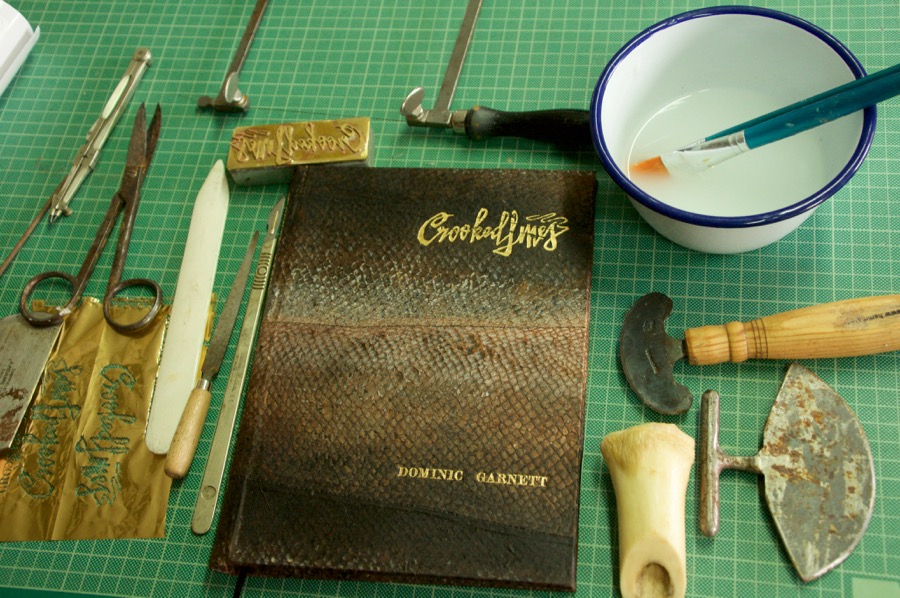
“It is the imperfections that give true character,” she says, as we admire the first covers. Kari admits to enjoying the actual process as much if not more than the final result. Just as well, because getting top notch fish leather is real art form that takes years of practice, trial and error.
It is amazing just how many subtle patterns and shades of colour are revealed in every skin. Each book will be a true one-off, never to be repeated- with various colours and finishes applied.
Just looking at the first versions, I’m swept away with the beauty and authenticity of the material. Nor could it be a more perfect fit for the “scales and all” style of Crooked Lines itself, with the crooked lettering and illustrations from Neil Bunn and distressed style design of Garrett Fallon.
At the time of writing (early December) we are nearly done with the initial books. Each will be signed shortly by myself and the other contributors, including designer Garrett Fallon and illustrator Lord Bunn, who I will also persuade to add a special little touch to each copy.
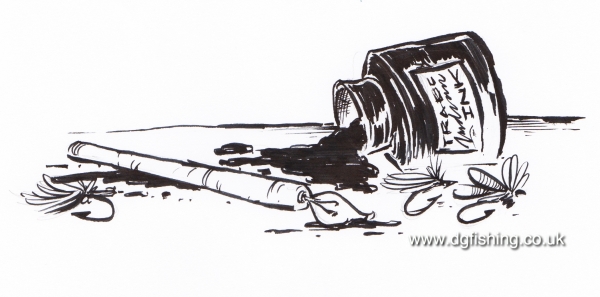
Could these be some of the world’s most unusual collectible fishing books in the making? I definitely think so. Indeed, it will be a tough challenge to set the price, because while I’m always eager to give people value, the books have involved a painstaking process and are totally different to anything else out there.
The special edition books will be for sale individually, with specific notes and photographs for each. A typical price is expected to be around the £250 mark, although some of the early, slightly less refined editions may go for less. When you consider that a mass-produced fly rod made in China could cost you twice this much, I think that is an excellent price!
Keep an eye on the shop for forthcoming editions and prices HERE.
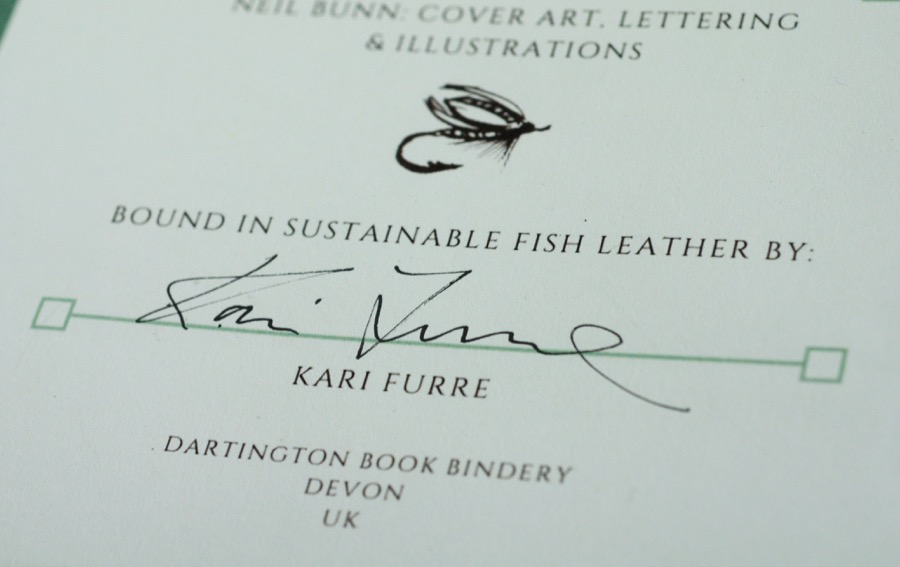
Given that collectible books are very much judged by their covers, not to mention the craftsmanship and rarity of materials, I’d say that these could be an excellent long-term investment. Not to mention each being a rare thing of beauty in its own right. I cannot wait to see what Kari will do with the wolf fish and cod skins. Have no fear though- there are no pike or carp editions planned!
More examples of Kari Furre’s work can also be seen at www.karifurre.co.uk
while those who are curious to know more or perhaps would like to reserve a copy, you are more than welcome to contact me on (0044) 7804 240986 or email domgarnett@yahoo.co.uk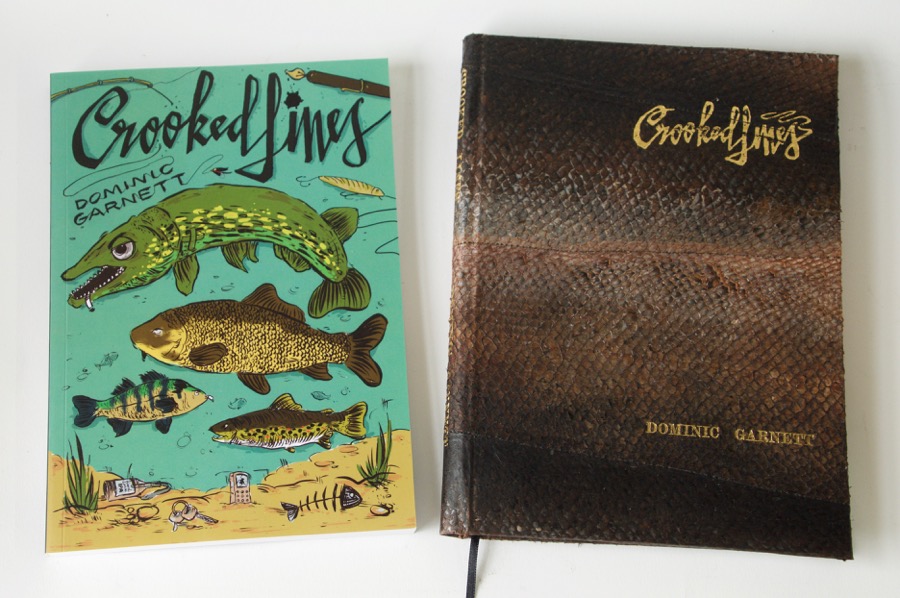
It might be a push to provide the first copies for Christmas- although we will try our level best. In the meantime though, you could always grab a signed copy of the original Crooked Lines, which is a snip at £9.99 for two dozen of my best and strangest fishing tales, accompanied by art from Lord Bunn and a foreword by Matt Hayes.
You can also download Crooked Lines as an Amazon Kindle E-Book for just £4.99
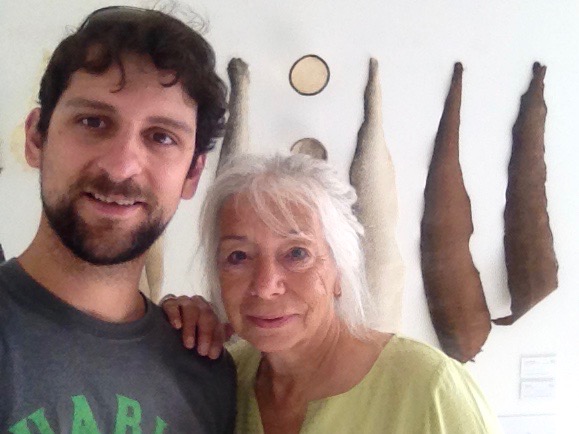
It has been an extremely exciting project to say the least. I’ll keep you posted as the books progress, but one of my next missions is to get Kari fly fishing! Rainbow trout skin would certainly make another fantastic material to put to creative use- but the possibilities are endless.


